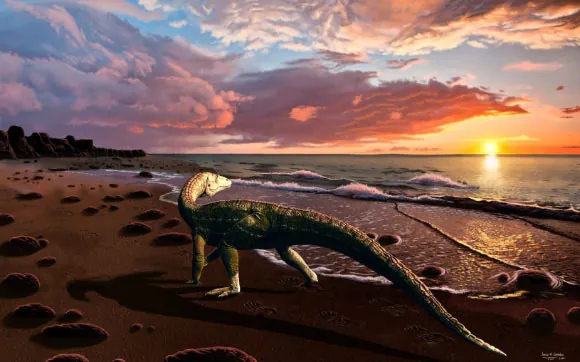
Triassic Reptiles: Masters of Survival in Hostile Tropical Landscapes
2025-06-11
Author: Yu
In a groundbreaking revelation, researchers have uncovered that ancient reptiles known as archosauromorphs could migrate across tropical regions once deemed too extreme for life, following the cataclysmic end-Permian mass extinction.
Previously, scientists believed these small, reptile-like creatures were restricted to certain areas due to the intense heat in the tropics during the earliest Triassic period. However, a pioneering study from the University of Birmingham, led by paleontologist Joseph Flannery-Sutherland, flips this narrative.
Employing an innovative analysis technique that combines landscape reconstructions with evolutionary trees, the researchers have traced the movements of these reptiles during the Triassic—a time when over half of all land species and a shocking 81% of marine life had perished.
The findings suggest that archosauromorphs not only survived this extinction event but also flourished, eventually leading to the emergence of dinosaurs. Astonishingly, these resilient reptiles migrated as far as 16,000 km (10,000 miles) across what was then a tropical dead zone, accessing new ecosystems vital for their survival.
Dr. Flannery-Sutherland noted, "Amid the worst climatic event in Earth’s history, where life was decimated, archosauromorphs thrived, adapting ingeniously to their environment. Their ability to withstand the brutal conditions of the Pangean tropics likely gave them a significant edge in the Triassic ecosystem."
With an intriguing method nicknamed TARDIS, the team focused on analyzing terrains and routes through space-time, revealing the movement patterns of these prehistoric reptiles. This unique approach shed light on previously unknown aspects of their fossil records, suggesting a more complex survival strategy than previously understood.
Professor Michael Benton from the University of Bristol emphasized the challenges in reconstructing ancient ecosystems, stating, "By weaving together fossil data with maps of ancient landscapes, we can better grasp the interplay between environmental shifts and evolutionary changes in extinct organisms."
Published in the journal *Nature Ecology and Evolution*, this research reshapes our understanding of survival in extreme conditions and highlights the remarkable adaptability of life on Earth.


 Brasil (PT)
Brasil (PT)
 Canada (EN)
Canada (EN)
 Chile (ES)
Chile (ES)
 Česko (CS)
Česko (CS)
 대한민국 (KO)
대한민국 (KO)
 España (ES)
España (ES)
 France (FR)
France (FR)
 Hong Kong (EN)
Hong Kong (EN)
 Italia (IT)
Italia (IT)
 日本 (JA)
日本 (JA)
 Magyarország (HU)
Magyarország (HU)
 Norge (NO)
Norge (NO)
 Polska (PL)
Polska (PL)
 Schweiz (DE)
Schweiz (DE)
 Singapore (EN)
Singapore (EN)
 Sverige (SV)
Sverige (SV)
 Suomi (FI)
Suomi (FI)
 Türkiye (TR)
Türkiye (TR)
 الإمارات العربية المتحدة (AR)
الإمارات العربية المتحدة (AR)